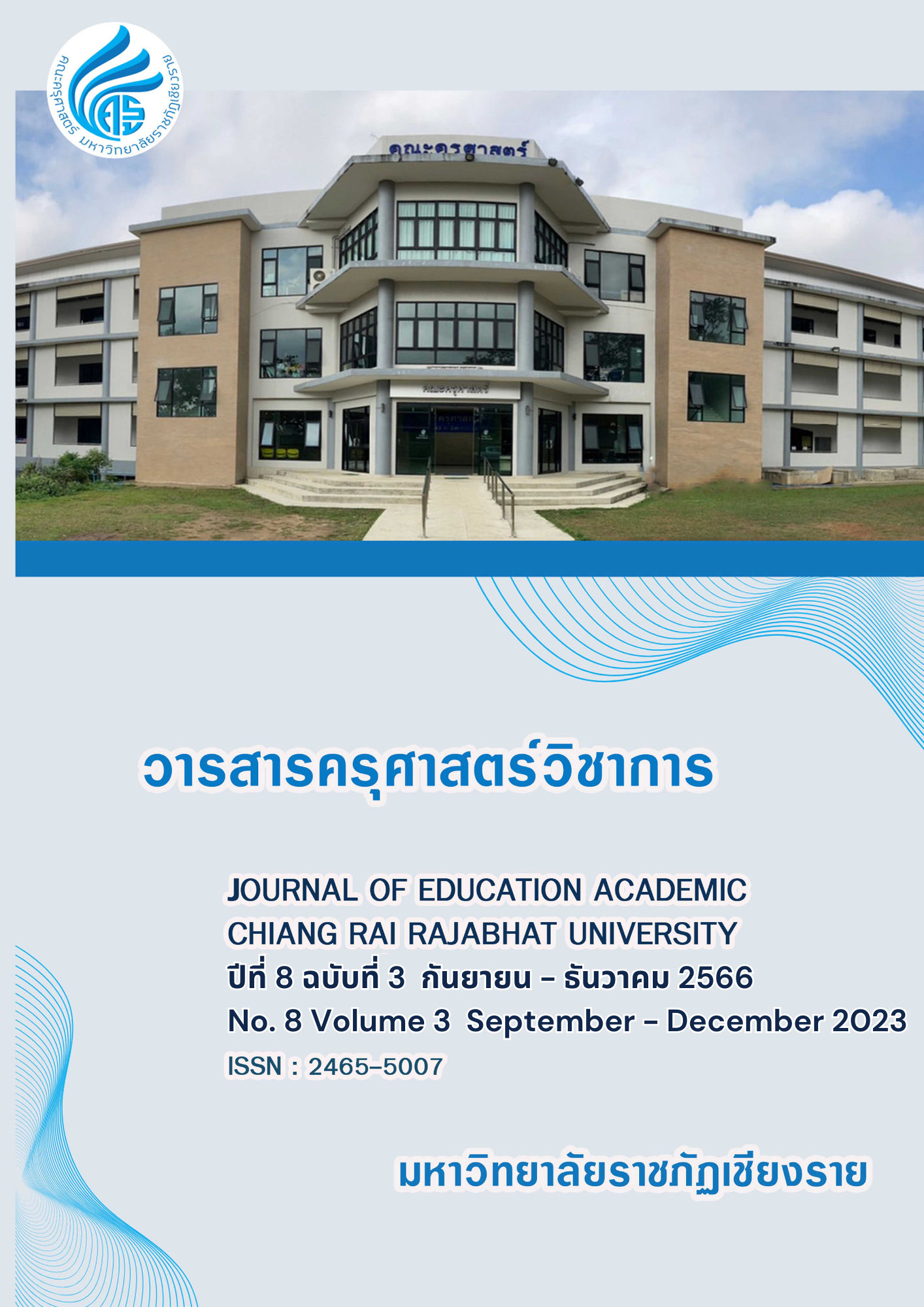A Cultural Anthropological Study of the Lahu Ethnic Group in Thailand
Keywords:
Thailand, Lahu Ethnic Group, Cultural Traditions, Anthropological StudyAbstract
This paper aims to explore the origins and migration history, and to study subgroups, population, distribution, socio-cultural changes, and the reasons behind these aspects within the Lahu ethnic group in Thailand. It agrees that the “Hill Tribe Development Plan” policy implemented by the Thai government has brought about profound transformations in the Lahu’s socio-cultural structure, economic livelihood, and religious beliefs. In the midst of the collision between tradition and modernity, as well as the decision-making process regarding development models and cultural heritage, the Lahu people in Thailand have chosen a “unique pattern” and lead a life characterized by equality and harmony.
References
Antisdel, C.B. (1911). “Lahoo Traditions.” Burma research Society’s Jour, Vol. I, Part II, December, 1911b.
Boonyasaranai, P., & Chemue, M. Y. (2015). The Lahu Ethnic Group: Various Lives from Mountain to City. Retrieved from https://www.sac.or.th/databases/ethnicredb/research_detail.php?id=1918
Borkayu, S. (1973). The Significance and Claim Status of Forests for the Lahu People in Thailand (master thesis). Chiang Mai: Chiang Mai University.
Bunyasāranai, P., & Chœ̄mư̄, M. (2006). Lahu Ethnic Group: Various Lives from Mountain to City. Sūn Sưksā Chāttiphan læ Kānphatthanā, Sathāban Wičhai Sangkhom, Mahāwitthayālai Chīang Mai.
Chaninthon, Sawanaphakdi. (2003). The Thai Naturalization of Lahu People in Chuang Rai Province. M.A. Thesis, Mahidol University.
Chang, Y., He, J., & Zhang, R. (1986). An Introduction to Lahu Language. Beijing: Ethnic Publishing House.
Chantana-wa, P. (1995). Cultural Changes among Christians and Red Lahu: A Comparison of Yapaha Village and Sankhule Village, Mae Hong Son County (Master thesis). Bangkok: Silpakorn University.
Dai, Q. (2009). The Akha People and their Language Use in Ban Wiang, Thailand. Beijing: China Social Sciences Press.
Dai, Q. (2010). The Lahu People and their Language Use in Chiang Rai, Thailand. Beijing: China Social Sciences Press.
Department of the Army. (1970). Ethnographic Study Series: Minority Groups in Thailand, Military Operations, International and Civil Affairs, Washington, D.C.
Do Rah Paul. (1999). Three Great Lahu Leaders of the Lahu Baptist Convention. Bachelor of Divinity Research Paper, Myanmar Institute of Theology, Seminary Hill, Insein.
Elena Samuel. (1998). The Religious and Traditional Beliefs of Lahu People. Bachelor of Divinity Thesis, Myanmar Institute of Theology, Seminary Hill, Insein.
John F. Embree and William L. Thomas Jr. (1950). Ethnic Groups of Northern Southern Asia, New Haven, Yale University.
Lahu ethnic group in Thailand. (n.d.). Retrieved from https://impect.or.th/%E0%B8%8A%E0%B8%99%E0%B9%80%E0%B8%9C%E0%B9%88%E0%B8%B2%E0%B8%A5%E0%B8%B2%E0%B8%AB%E0%B8%B9%E0%B9%88-lahu/
Lewis, P. W. (1984). Peoples of the Golden Triangle: Six Tribes in Thailand. London; New York, NY: Thames and Hudson.
Hallett, Holt S. (1998). A Thousand Miles on an Elephant in the Shan States, Bangkok, White Lotus, first published 1890.
Jin, Y. (1992). Dialect Atlas of Lahu in China (Volumes 1 and 2). Tianjin: Tianjin Academy of Social Sciences Press.
John, Sein Gyaw. (1968). “Baptist Mission to the Lahus.” Bachelor of Dvinity, A thesis presented to the Faculty of Theology, Burma Divinity School, Seminary Hill, Insein.
Jones, Delmos J. (1967). Cultural Variation among Six Lahu Village Northern Thailand. diss. Cornell University.
Khongkǣo, N. (1994). Living on the Yarn of 13 Thai Tribes. Čhatčhamnāī dōi Bō̜risat Sāmakkhīsān (Dō̜kyā).
Matisoff, James A. (1973). The grammar of Lahu, Berkeley: University of California Press.
Matisoff, James A. (1988). The dictionary of Lahu, Berkeley: University of California Press.
Na, Law Bo. (1992). Tradition and Belief of Lahu People. Bachelor of Theology Research Paper, Myanmar Institute of Theology, Seminary Hill, Insein, Yangon.
Maung Maung Tun. (1999). Rev. Ai Pun an Outstanding Lahu Christian Leader and His Mission. Bachelor of Theology Research Paper, Myanmar Institute of Theology, Seminary Hill, Insein.
Sanit, Wongprasert. (1974). Lahu Agriculture and Society. M.A. Thesis, Sydney University.
Sisava, B. (2002). Ethnic Minorities in Thailand. Bangkok: Arts and Culture Magazine Publishing.
Sukhotong, A. (1996). Cultural Preservation and Status Issues of the Yellow Lahu: Balah Village, Mae Suai County, Chiang Rai Province (master thesis). Bangkok: Political Science University.
Thra Aung Din. (1959). The Home Mission Program in the Wa States. Burma News, Vol. LXXII, No 1. January-February.
Tun Tun Aung. (1996). A New Missionary Paradigm for Pangwai Lahu Baptist Church. Bachelor of Theology Research Paper, Myanmar Institute of Theology, Seminary Hill, Insein.
Walker, Anthony R. (1970). Lahu Nyi (Red Lahu) Village Society and Economy in North Thailand, a Terminal Report to the Royal Thai Government, Chiangmai.
Walker, Anthony R. (1983). The Lahu People: An Introduction. Highlanders of Thailand ed. John McKinnon, Wanat Bhruksasri, Kuala Lumpur: Oxford University Press, 1983a.
Walker, Anthony R. (1983). Traditional Lahu Nyi (Red Lahu) Rites of Sorcery and Counter-Sorcery” Journal of Asian and African Studies, No 26, Institute for the Study of Languages and Cultures of Asia and Africa (ILCAA),1983b.
Yawnnghwe, Chao Tzang. (1987). The Shan of Burma Memoirs of a Shan Exile, Singapore: Institute of Southeast Asian Studies.
Downloads
Published
Issue
Section
License
Copyright (c) 2024 Journal of Education Academic Chiang Rai Rajabhat University

This work is licensed under a Creative Commons Attribution-NonCommercial-NoDerivatives 4.0 International License.






